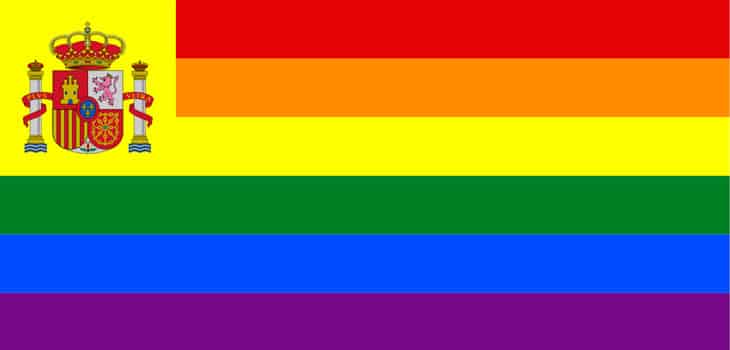
“Transgender” doesn’t exist in Spanish, so we’ll make it up
Now that’s a point of grammar that will either get trans organisations to issue a fatwa (against me, as usual) or maybe make them agree with me (for once). I’m personally fond of studying languages and how they evolve through time (latin languages being my favourites).
I believe languages are not set in stone and evolve through time, and that words are tied to the culture of those who use them (and that the same word can be understood and felt differently from a place or another, as for the example of “ladyboy” which would get any transsexual upset in the USA, but is perfectly owned and employed by Thais). And that’s making our world beautiful 🙂
On this page
Dating Ladyboys in Spanish
So last month we translated our site into Spanish! We are actually starting to translate our site into as many languages as possible, since we have vocation of being the number one international dating site for the transgender community. And I am being very perfectionist, I want our translations to be of the best quality possible (I told you I’m a language lover).
The man who did the Spanish version is a well educated man (American living in Mexico) who’s as close to the trans community as I am. Though we encountered a problem: “transgender” doesn’t seem to officially exist in Spanish. As gender translates with “género” in Spanish (noun, m), “transgender” would translate with “transgénero” (adj, m). But various dictionaries will return various results (or not return anything):
My Ladyboy Date Spanish Version Changes
- Linguee doesn’t know either “transgender” nor “transgénero“
- Ultralingua knows “transgender” but not “transgénero“
- Bab.la doesn’t know either “transgender” nor “transgénero“
- Collins knows both “transgender” and “transgénero” (indicates transgénero is invariable, which means it doesn’t have a feminine form or plural form)
- Reverso doesn’t know either “transgender” nor “transgénero“
- Diccionarios doesn’t know “transgénero“
- Larousse doesn’t know either “transgender” or “transgénero“
- WordReference knows “transgender” (but translates it into “transsexual”) but not “transgénero“
- TheFreeDictionary knows “transgender” but not “transgénero“
- SpanishDict doesn’t know “transgénero“
- SpanishCentral (Spanish equivalent of Meriam Webster) doesn’t know “transgénero“
Result: only WordMagic and Collins give a definition of “transgénero“. According to Collins, it’s invariable (no difference between plural/singular, masculine/feminine). According to WordMagic, it is variable. I’m scratching my head.
Even Glaad.org (which is supposed to be a reference in terms of LGBT grammar, “oh how dare you employ transgender like a noun, it’s an adjective!“) features a mix of “mujer transgénero” and “mujer transgénera“.
Why proper translation matters
It is not a problem in English, because adjectives are always invariable (you don’t change the spelling of an adjective depending on the gender and number of what it qualifies) but in Spanish it does (and in French also, by the way). For example, you say “un melón delicisio” (singular masculine for “a tasty melon“) but “unas manzanas deliciosas” (plural feminine for “tasty apples“). It seems the rule is that adjectives that derivate from nouns shall be invariable, like for colours (“rosa“, rose pink or “naranja“, orange), or like “macho“.
In this case, considering that “transgénero” is an invariable adjective literally equals considering it’s also a noun. An idea that would make angry our transgender friends who are adepts to political correctness.
English is the leading language in most domains (medicine, technology, sociology…). That includes these new terminologies related to the trans community (don’t expect to find these terms in Thai or Filipino!). It used to be French a century, now it’s English. Anyways, most of the time, these terms are latin based. Spanish is latin based, but it seems we lack of Spanish speaking advocates promoting them properly.
Conclusion
Based on the fact that “transgender” shall be an adjective (and never a noun!) in English, it seems odd to not apply the same principle in Spanish. Thus it should be incorrect to use “transgénero” as a noun. And thus, it should be incorrect to consider it’s an invariable adjective. That’s the reason why we are employing “transgénero” as an adjective with the following definition:
Singular: transgénero
Plural: transgéneros
Feminine: transgénera
Plural and Feminine: transgéneras
Moreover, it has the following advantage: it gives you an extra information about how somebody identifies. For example “Soy transgénero” (“I am transgender“, masculine form) you understand the person identifies as a man, whereas “Soy transgénera” (“I am transgender” feminine form) you understand the persona identifies as a woman.
I don’t think this is going against common sense and correct grammar, and I don’t think this is offending anybody (if so, I apologise of course). Words are not just made by academicians, but also by the people who commonly employ them. Therefore, since it seems to be an open field, let’s just start using “transgénero” as a standard adjective with masculine/feminine form, and not as noun. And if it spreads and gets employed by the majority, then it will make its way to the dictionary.
I would be happy to hear your comments about it of course, especially Spanish speaking people. Thanks for reading!

